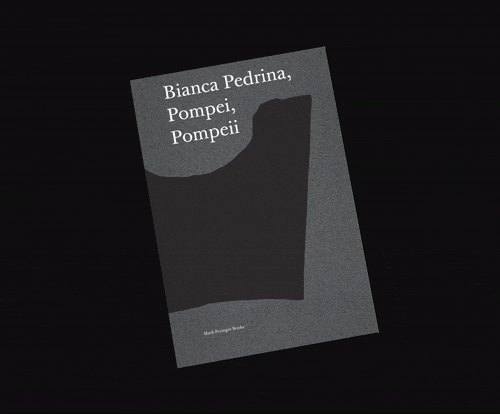
Published by
Mark Pezinger Books
2019
Text: Michiel Huijben
Graphic Design: Astrid Seme
English, 112 pages
16,5 x 23,5 cm
Edition: 350
ISBN: 978-3-9504525-7-0
19 €
Order here: hallo(at)biancapedrina.com
EN
For Pompei, Pompeii Bianca Pedrina carefully inspects the relationship between form and function in a newly implemented accessibility project in Pompeii. The project consists of iron elements embedded in the gaps of the historic Roman streets, and allow barrier-free access to the excavation site. These custom-fit grids and ramps seem to melt between lava stones underfoot.
The contemporary architectural intervention into the ancient Roman city structure shows the individual city planning concepts of different eras and cultures and their handling of marginalised groups.
Pompei, Pompeii contains portrait photographs of those newly installed iron grids, and images of isolated Pompeii tourists. They both ask questions about sustainable and meaningful forms of tourism and about the use and transformation of built environments over time.
The photographs are accompanied by an essay by Dutch architectural theorist and artist Michiel Huijben. He traces the history of Pompeii, its continued existence as one of the most visited archaeological excavation sites with all its inherent myths and secrets.
DE
Die Basler Künstlerin portraitiert das jüngst eingeführte Accessibility-Projekt Pompei per tutti in der gleichnamigen archäologischen Ausgrabungsstätte. Diese architektonische Intervention ermöglicht einen Zugang zum Archäologiepark für Personen mit eingeschränkter Mobilität. Sie besteht unter anderem aus sorgfältig eingepassten Eisengittern und Rampen, welche in die Lücken der historischen römischen Straßen eingebettet worden sind und an kritischen Punkten die Überquerung der antiken Strassenkreuzungen erlauben.
Porträtaufnahmen dieser individuellen Eisenelemente werden durch Fotografien von vereinzelten Touristen erweitert. Beide werfen Fragen auf zu nachhaltigen und sinnvollen Formen des Tourismus und zur Nutzung und Transformation von gebauter Umwelt im Verlauf der Zeit.
Das Buch wird von einem Essay des Architekturtheoretikers und Künstlers Michiel Huijben begleitet. Er beleuchtet darin die Geschichte von Pompeii, ihren Fortbestand als archäologische Ausgrabungsstätte mit den ihr innewohnenden Geheimnissen und Sonderheiten, und nicht zuletzt ihre Existenz als eine der meist besuchten archäologischen Ausgrabungen der Welt.